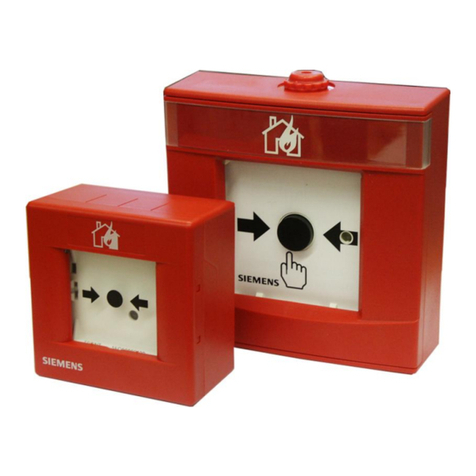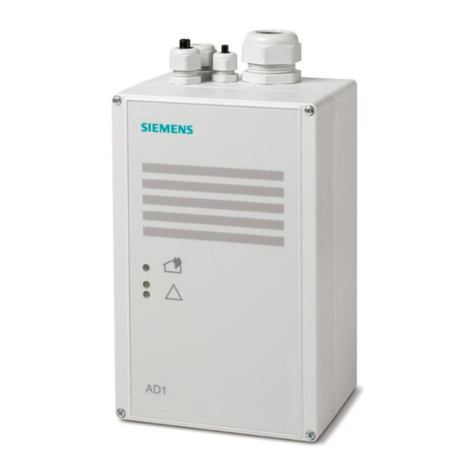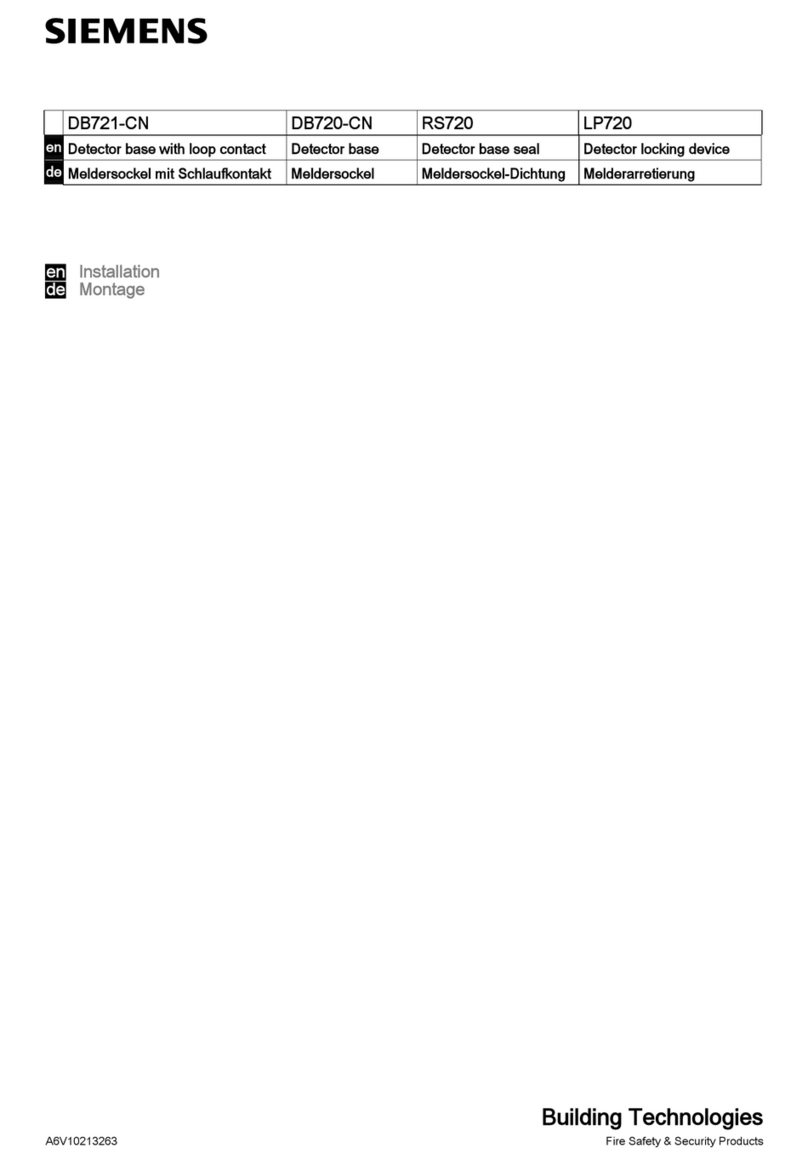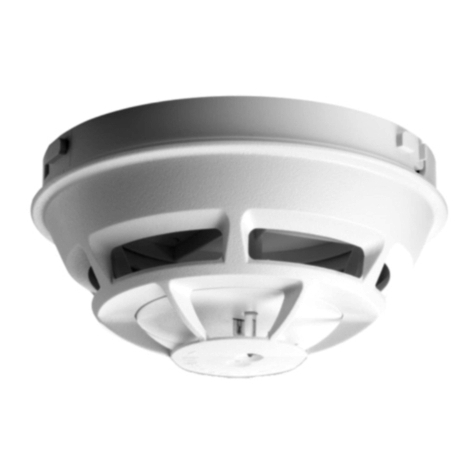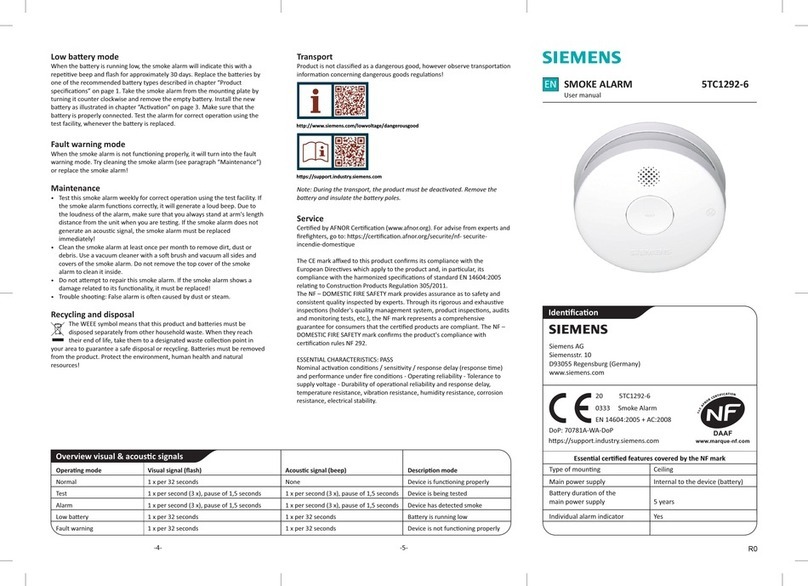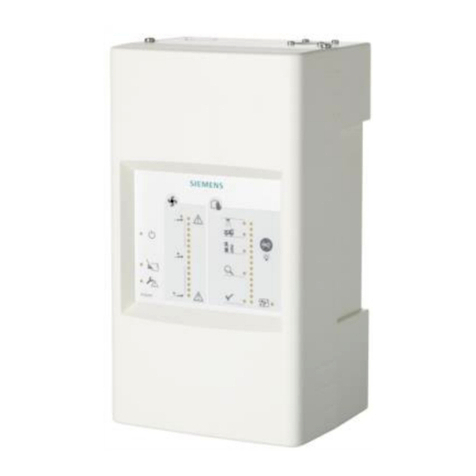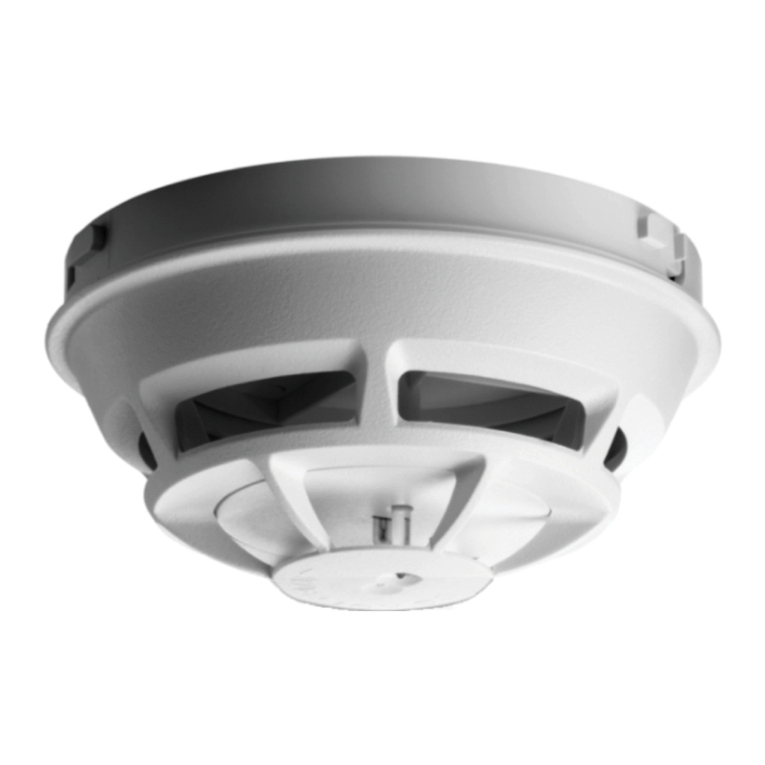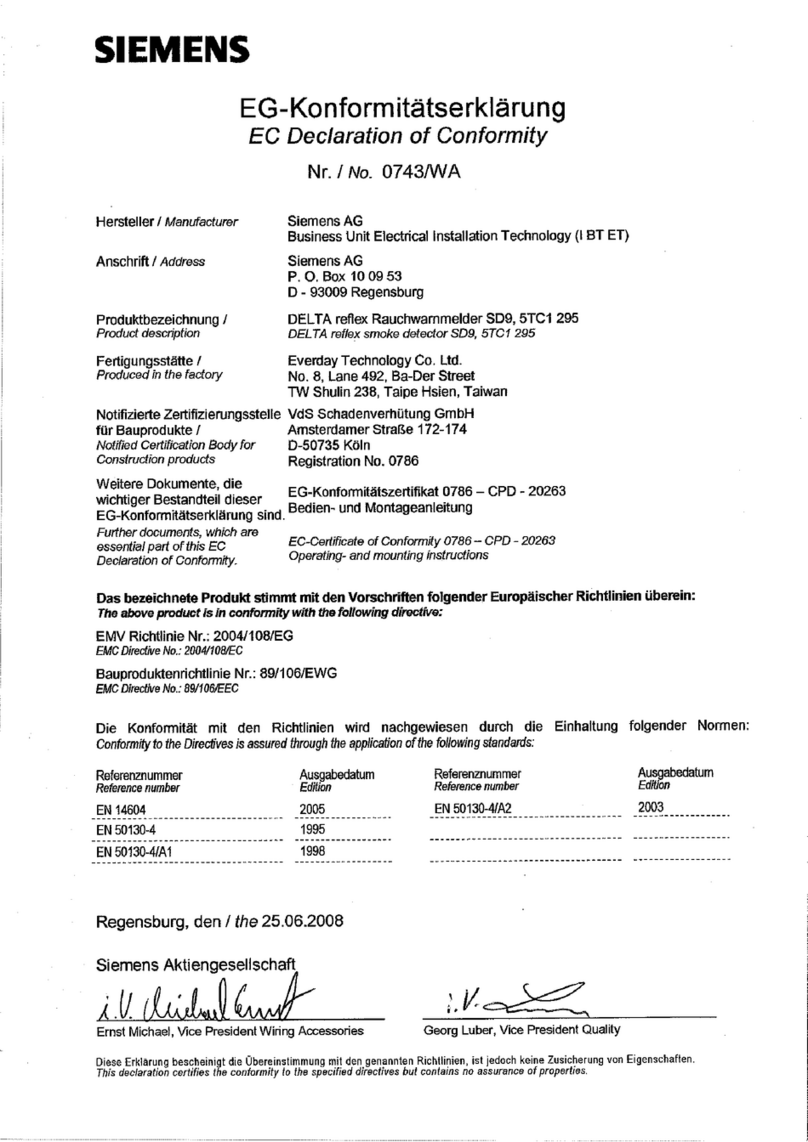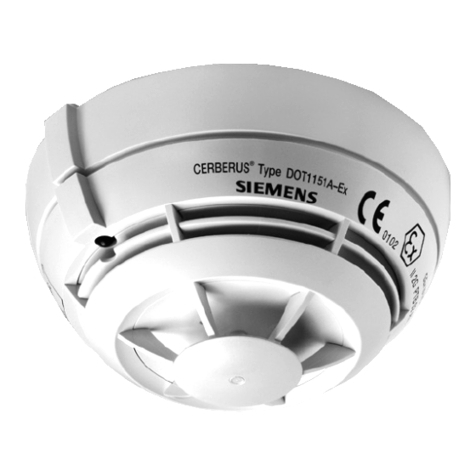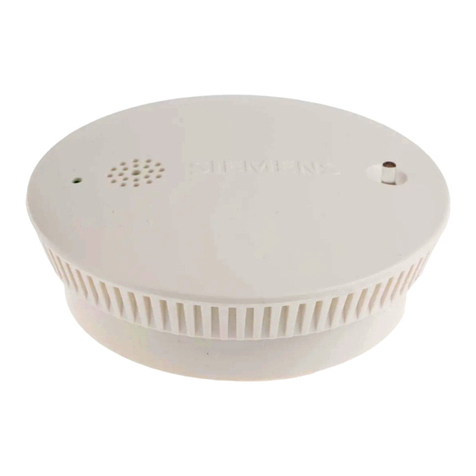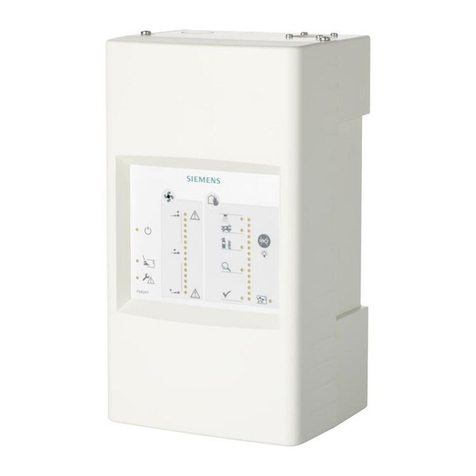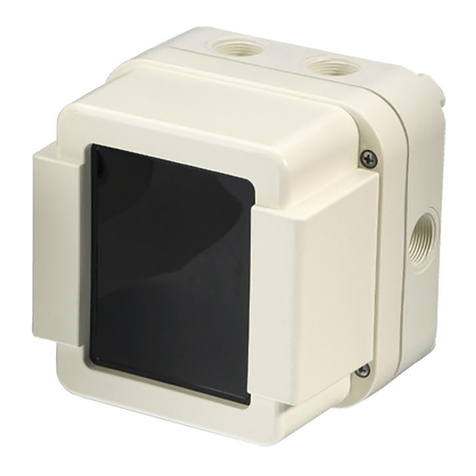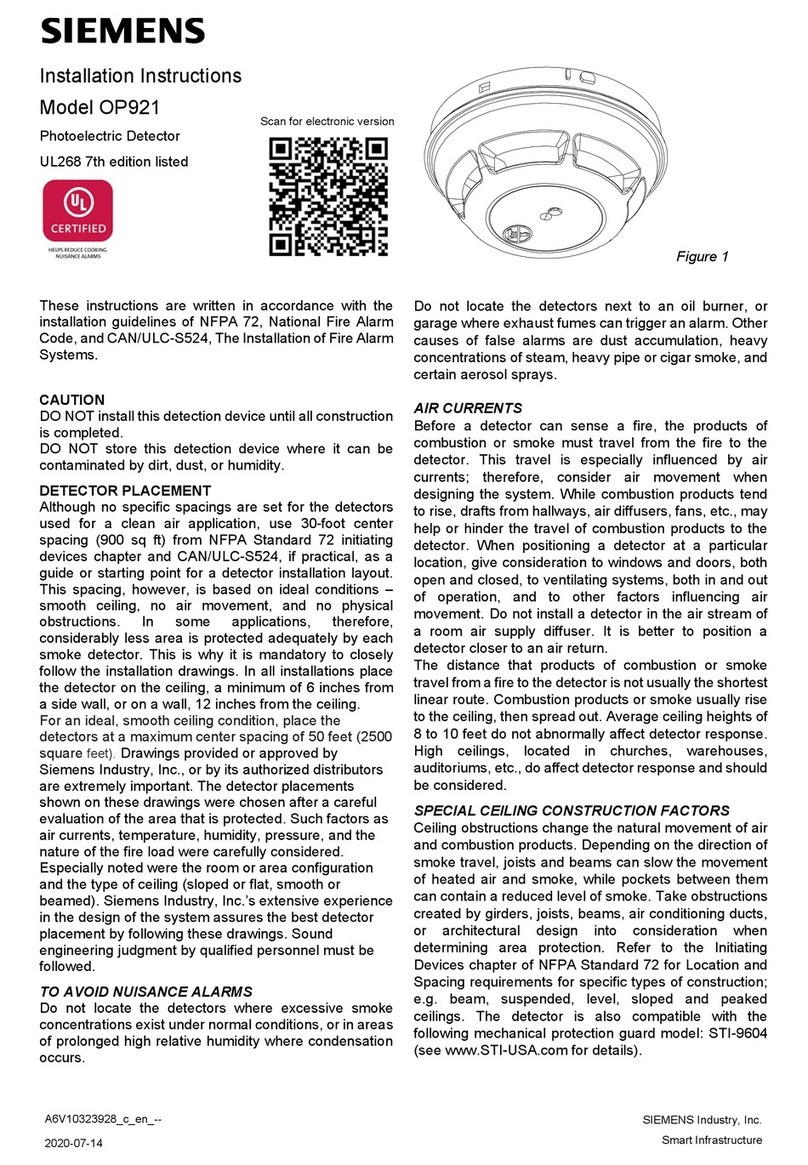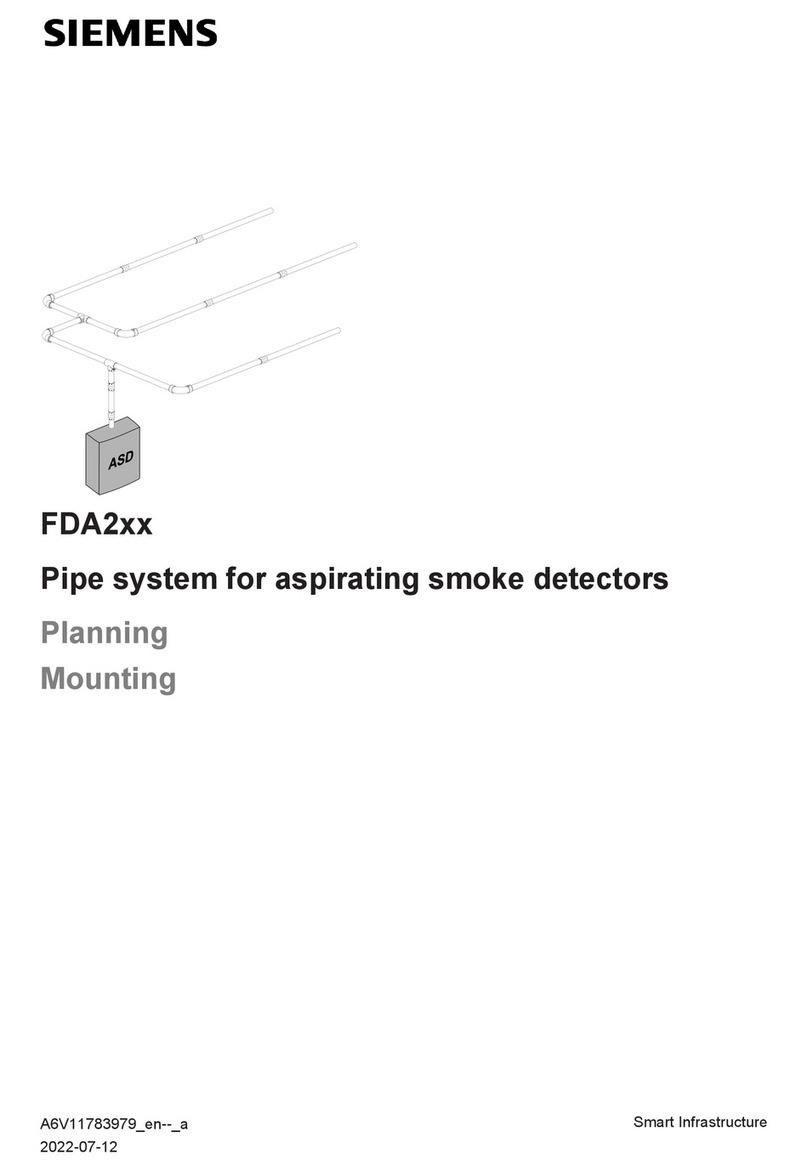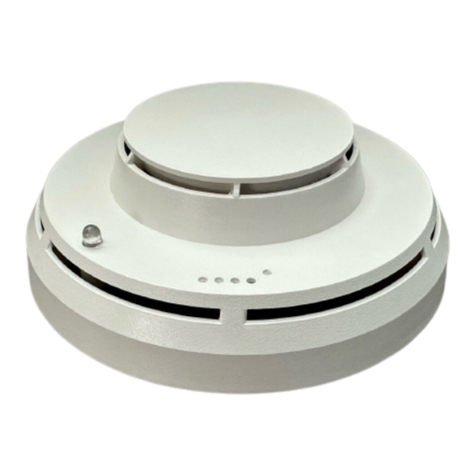
2
AIR CURRENTS
Before a detector can sense a fire, the products of combustion
or smoke must travel from the fire to the detector. Since their
travel is especially influenced by air currents, the movement
of air must be considered in the design of the system. While
combustion products tend to rise, drafts from hallways, air
diffusers, fans, etc., may aid or hinder the travel of combustion
products to the detector. When positioning a detector at a
particular location, consideration must be given to windows
and doors, both open and closed, and to influencing air
movement. A detector should never be installed in the air
stream of a room air supply diffuser. It may be advantageous
to position a detector closer to an air return.
The distance that products of combustion or smoke travel
from a fire to the detector is not usually the shortest linear
route. Combustion products or smoke usually rise to the
ceiling, then spread out. With average ceiling height (8 to
10 feet), this will not be an abnormal factor. Height should be
taken into account, however, for high ceilings such as in
churches, warehouses, auditoriums, etc.
SPECIAL CEILING CONSTRUCTION FACTORS
Ceiling obstructions can change the natural movement of air
and combustion products. Depending on the direction of
smoke travel, joists and beams can slow the movement of
heated air and smoke, while pockets between them can
contain a reduced level of smoke.Take obstructions created
by girders, joists, beams, air conditioning ducts, or
architectural design into consideration when determining area
protection. Refer to the Initiating Devices chapter of NFPA
Standard 72 for Location and Spacing requirements for
specific types of construction; e.g. beam, suspended, level,
sloped and peaked ceilings.
TEMPERATURE AND HUMIDITY
The temperature range for Models DI-3, DI-3H, DI-3IS, DI-
A3, and DI-A3H is 32oF (0oC) to 100oF (37.8oC). The four
models can each be used in environments where the humidity
does not exceed 93% (non-condensating).
PRESSURE
Normal changes of atmospheric pressure due to changes in
weather have a negligible effect on detector sensitivity.
However, the lower air pressure at higher altitudes does have
some effect on the sensitivity of ionization type detectors.
Refer to the following table.
APPLICATIONS
ledoM
yticoleV
dnaR
)nim/tf(
edutitlA
ednaR
)teef(noitacilppA
3-ID003-00004-0aeranepO
H3-ID003-00008-0003aeranepO
SI3
-ID0003-00004-0aeranepO
3A-ID0021-00004-0retupmoC/aeranepO
stopstcudriA/seitilicaf
H3A-ID0021-0030008-0003ylnosto
pstcudriA
SPECIAL NOTE - HIGH STOCKPILING
In general, detector placement for high stockpiling requires
closer spacing, depending on the nature of the stock, its
stored height, and the height of the building. Newer
technologies recommend additional detector locations at
tiered, lower levels. Detector placement for this type hazard
requires a judgment factor that can only be provided by
experienced, qualified personnel.
DI-3IS ONLY—Use in hazardous atmospheres. The DI-3IS
is approved by Factory Mutual to protect areas identified as
Class I, Division 1, Groups A, B, C, and D. The intrinsically
safe operation requires the use of a diode shunt barrier for
System 3 applications or a DC Isolator for MXL CZM-1/-1B6
applications. For System 3 applications refer to the Model
515-180238 Installation Instructions, P/N 315-091465. For
MXL CZM-1/-1B6 applications, refer to the CZM-1 Installation
Instructions, P/N 315-090725 or the CZM-1B6 Installation
Instructions, P/N 315-095355, as applicable.
DETECTOR WIRING
Siemens Industry, Inc., detectors should be interconnected
as shown in Figure 1 and wired to the control panel by
following the Wiring Connection drawing installed on the
inside face of each control panel cover. Duplicate wiring
information is also contained in the Installation, Operation,
and Maintenance manual provided with every control panel.
Note should be made of any limitations on the number of
detectors permitted on each circuit. Quantities may vary,
based on the specific type of response designed into the
system (fan shutdown, door closing, external relay tie-in,
extinguishing system discharge, etc.).
DETECTOR MOUNTING
The detector is provided with a separate base which attaches
to a standard 4 inch square, 4 inch octagonal, or single
gang outlet electrical box. The depth of the box is determined
by the National Electrical Code for the number and size of
the conductors used.
TO MOUNT:
• Route all wires outward
from outlet box.
• When the alarm LED
viewing is critical,
position the LED mark in
the base in the intended
direction. (See Figure 2.)
• Mount base to outlet box
and route wires through
the hole in the center of
the base. Make
connections directly to
the base terminals.
Refer to Figure 1 for
details.
• After all bases are installed, including the end-of-line
device, check loop continuity. (Refer to system operation
manual for procedure.) To make the continuity check, a
jumper is furnished in every base (between terminals 1a
and 1b) to complete the loop (See Figure 2). An open cir-
cuit condition exists until the jumper or detector is installed
in the base.
Figure 2
